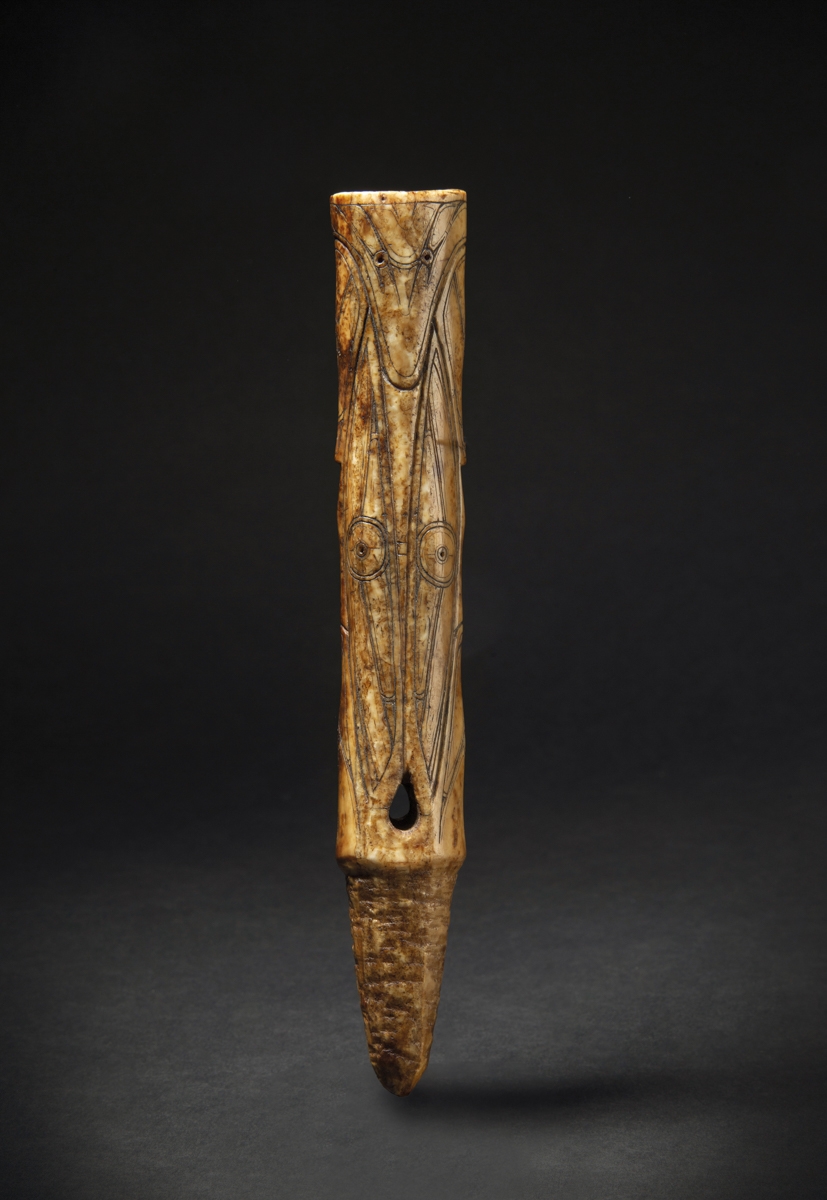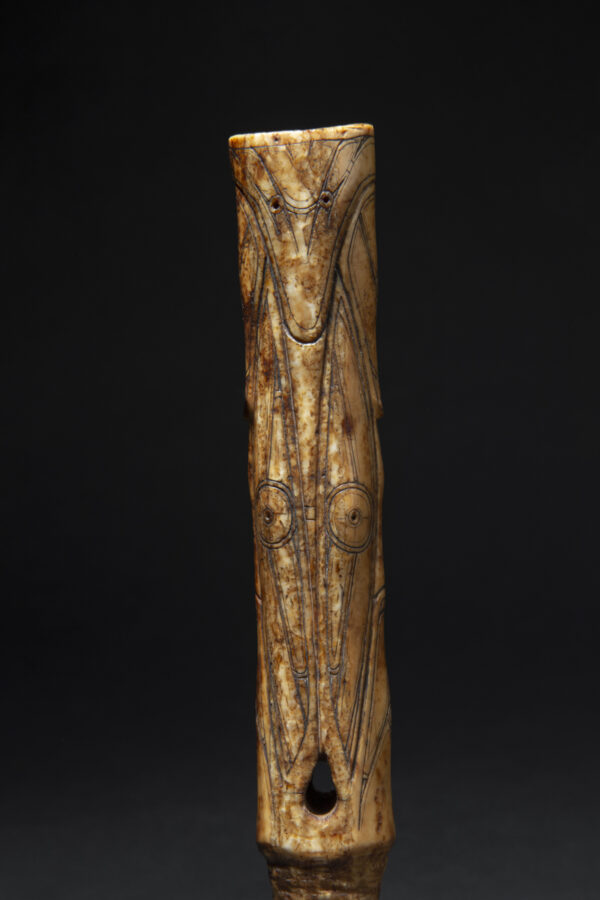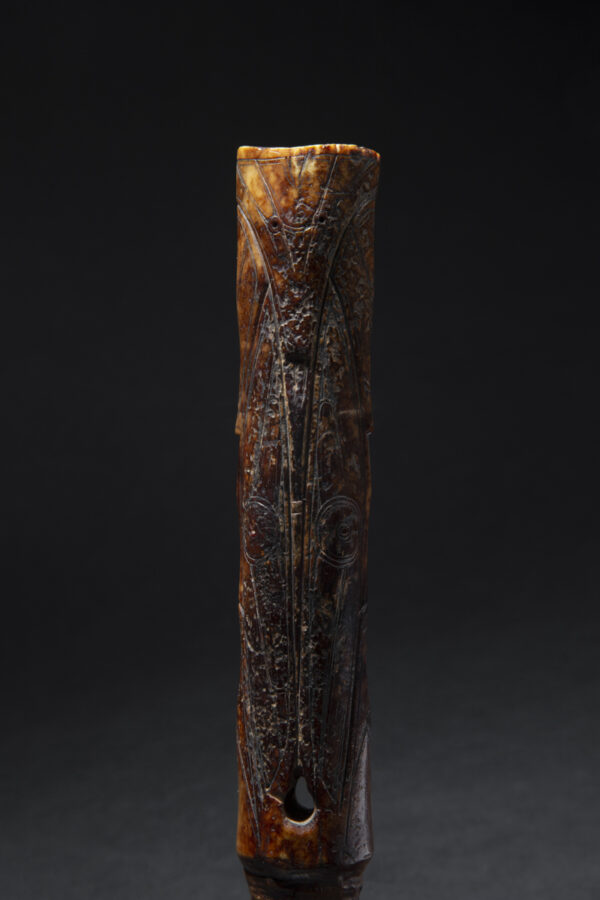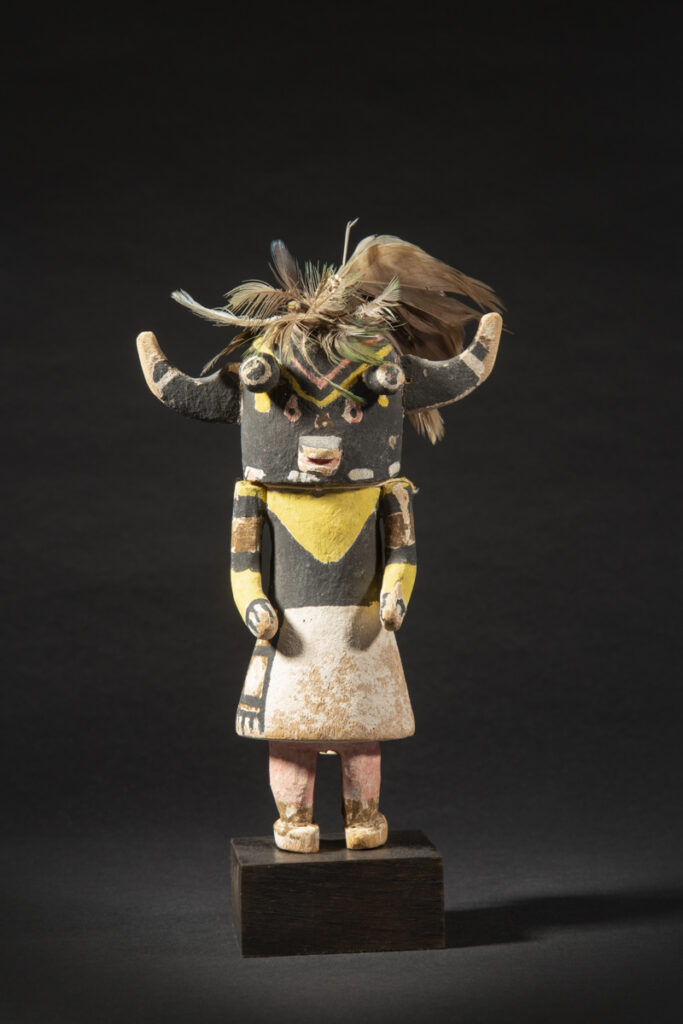North America | Alaska
Old Bering Sea
Alaska
Harpoon socket piece
Old Bering Sea II-III culture
Ancient Eskimo
200-500 AD
Walrus tooth
Height: 20 cm – 7 ¾ in.
Provenance
Ex collection Jeffrey Myers, New York
Ex collection Dr. Andreas et Kathrin Lindner, Munich
Ex Sotheby’s Paris, 8 juin 2007, lot 225
Harpoon socket piece 20 cm / Galerie Flak
Price on request
Throughout history, Eskimo cultures have shared the belief that all things in the physical world are imbued with a living spirit, or inua. In order to gain favor with the spirits controlling the animals, a hunter had to approach his prey in a respectful manner. It was believed that decorated objects, through their beauty, attracted the prey and at the same time honored its spirit. Carved depictions of great predators like polar bears or raptors on hunting equipment also helped it find its way to the prey. The harpoon was seen as a traveler between spirit worlds, a messenger between the humans and the creatures of the sea.
As mentioned by Peter Loovers (Sainsbury Centre), based on Sergei A. Arutunov’s ‘The Eskimo Harpoon’, In Gifts from the Ancestors: Ancient Ivories of the Bering Strait, Princeton University Art Museum, 2009, pp 52-57, the sophisticated Old Bering Sea (OBS) harpoon consists of five parts: the counterweight-stabiliser (winged object), the shaft, the socket piece, the foreshaft, and the harpoon head. The harpoon would have been thrown with an atlatl and the harpoon head would have been attached to an inflated seal bladder. The walrus ivory components of the harpoon were beautifully carved and in particular the counterweight-stabiliser, the socket piece, and the harpoon head were with striking with intricate designs.
This reusable hunting implement had to be heavy enough to penetrate the thick skin of walruses or seals and short enough to be thrown by a hunter aboard his kayak.
The invention of the harpoon ensured organized, predictable, and fruitful hunting expeditions, establishing the foundation for a stable and flourishing culture.
Arctic carvers decorated their hunting gear with shamanic designs to enhance their spiritual potency and maximize their efficacy.
As mentioned by Peter Loovers (Sainsbury Centre), based on Sergei A. Arutunov’s ‘The Eskimo Harpoon’, In Gifts from the Ancestors: Ancient Ivories of the Bering Strait, Princeton University Art Museum, 2009, pp 52-57, the sophisticated Old Bering Sea (OBS) harpoon consists of five parts: the counterweight-stabiliser (winged object), the shaft, the socket piece, the foreshaft, and the harpoon head. The harpoon would have been thrown with an atlatl and the harpoon head would have been attached to an inflated seal bladder. The walrus ivory components of the harpoon were beautifully carved and in particular the counterweight-stabiliser, the socket piece, and the harpoon head were with striking with intricate designs.
This reusable hunting implement had to be heavy enough to penetrate the thick skin of walruses or seals and short enough to be thrown by a hunter aboard his kayak.
The invention of the harpoon ensured organized, predictable, and fruitful hunting expeditions, establishing the foundation for a stable and flourishing culture.
Arctic carvers decorated their hunting gear with shamanic designs to enhance their spiritual potency and maximize their efficacy.
Publication
Explore the entire collection



































































